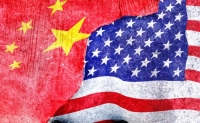Hegemonic Transition Through Communication? Evolving Narratives and Interplay Between Material and Ideational Elements in USA-China Diplomatic Incidents (1990-2020)
Principal Investigator:
Noé Cornago, CPD Research Fellow 2023-25
Studies on the ongoing global hegemonic transition, and in particular those focused on China's global rise, tend to adopt a long-term perspective, generally focused on the analysis of the various material elements – e.g. economic, military, technological or social power- upon which the ongoing transition operates. In contrast, it can be said that the ideational and discursive dimensions of that transition are under-researched. Moreover, when they are examined, particularly within Public Diplomacy studies, they are generally approached in terms of either the rise and potential fall of USA global leadership or the scope and limits of Chinese efforts to gain global cultural attraction, but not in the specific discursive manifestations of its mutual interaction across time. However, history of international relations reveals that both dimensions end up converging in each and every one of the great hegemonic transitions of the past. In other words, over-concentration on the material dimension upon which the current transition is grounded, makes difficult to grasp the relevance and nuance of the ideational and symbolic and discursive dimensions at play, both in the past and in the present, without which the whole hegemonic transition cannot be actually performed.
Unlike those works that attempt to address this issue by analogy with the immediate precedent of US hegemony and its rivalry with the Soviet Union during the Cold War, by studying public diplomacy, networks of influence, and the rise of global media, and cultural industry - in which China's achievements are not yet fully conclusive - our analysis adopts a very different prism. We will proceed to analyze an aspect of the new Chinese diplomacy that so far has been largely neglected, namely the communicative strategy that Beijing deploys in the context of its recurrent diplomatic incidents with the USA. Using of a variety of methodological tools -e.g. semiotic, discourse and conversational analysis (CA), a selection of ten incidents carried out by China and the United States, from 1990 to the present, and the discursive production they entailed – both in official diplomatic statements and as referred in global media outlets- will be carefully examined. But the corresponding narratives will be understood not only as the instrument for advancing China's specific interest in each of these incidents, but as an increasingly influential and assertive tool for performing the symbolic and highly ritualized representation of China as an increasingly powerful and self-confident global power, able and willing to supersede global liberal order and its extant hierarchies.








